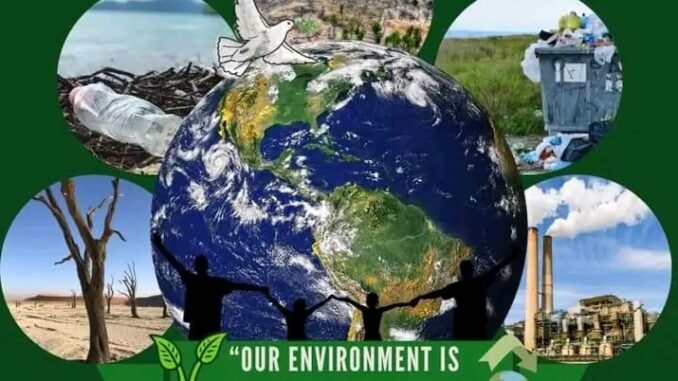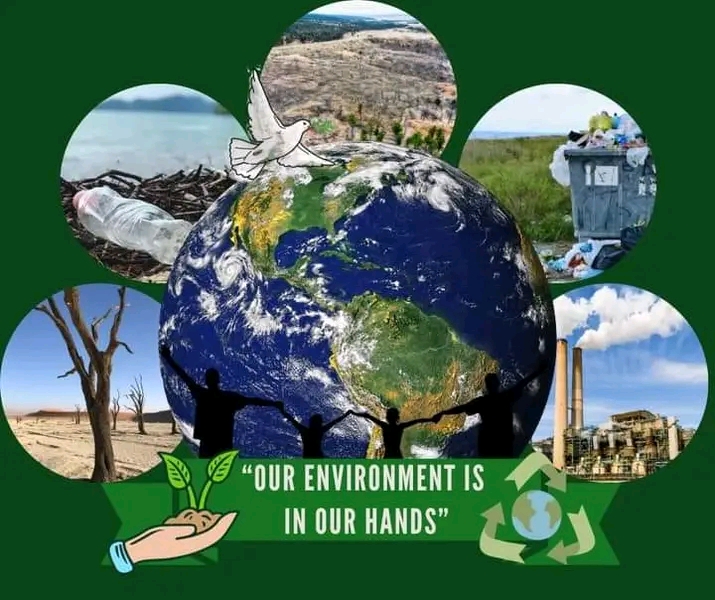
Environmental Law and Sustainable Development
Introduction:
Environmental law and sustainable development are interconnected fields that aim to address the challenges posed by human activities on the environment while fostering a balance between societal needs and ecological integrity. This comprehensive discussion will explore the key principles, international frameworks, and the evolving role of environmental law in promoting sustainable development.
Environmental law and sustainable development are inseparable concepts that intersect to address the pressing challenges of our time. As human activities continue to impact the planet, the legal framework plays a pivotal role in shaping policies, regulations, and international agreements aimed at fostering sustainability.
Key Principles of Environmental Law:
Precautionary Principle:
Environmental law often operates on the precautionary principle, emphasizing preventive measures to address potential harm to the environment. It encourages anticipatory action in the face of scientific uncertainty to avoid irreversible damage.
Precautionary Principle:
The precautionary principle underscores the idea that in the face of potential environmental harm, lack of scientific certainty should not be a barrier to taking action. This principle encourages decision-makers to adopt preventive measures, especially when the consequences of inaction could be severe and irreversible.
Polluter Pays Principle:
The polluter pays principle is a cornerstone of environmental responsibility. It asserts that those who cause pollution or environmental damage should bear the costs of mitigation and cleanup.
This principle provides economic incentives for industries to adopt cleaner practices and internalize the environmental externalities of their operations.
This principle holds those responsible for environmental damage financially accountable. It encourages industries and individuals to internalize the environmental costs of their activities, promoting a more sustainable and responsible approach.

Environmental Law and Sustainable Development
Integration Principle:
Environmental concerns are increasingly integrated into various policy areas, emphasizing the interconnectedness of social, economic, and environmental dimensions. This principle seeks to avoid compartmentalized decision-making.
International Frameworks and Agreements:
United Nations Framework Convention on Climate Change (UNFCCC):
Established in 1992, the UNFCCC is a cornerstone in international efforts to combat climate change. It sets the framework for negotiations and agreements to reduce greenhouse gas emissions and adapt to climate impacts.
Convention on Biological Diversity (CBD):
The CBD, established in 1992, aims to conserve biodiversity, ensure sustainable use of biological resources, and promote the fair and equitable sharing of benefits arising from genetic resources.
Paris Agreement:
Adopted in 2015, the Paris Agreement is a landmark accord under the UNFCCC. It brings countries together in a global effort to limit global temperature rise, enhance climate resilience, and transition to a low-carbon future. The agreement emphasizes nationally determined contributions and international cooperation.
In 2015 under the UNFCCC, the Paris Agreement sets out international commitments to limit global temperature rise and enhance climate resilience. It emphasizes a bottom-up approach, with countries determining their own contributions.
Environmental Law and Sustainable Development
Sustainable Development Goals (SDGs):
The SDGs, adopted in 2015, provide a comprehensive blueprint for global development. Several goals directly address environmental sustainability, including clean water and sanitation, affordable and clean energy, life below water, and life on land. Environmental law is instrumental in achieving these goals through regulation and enforcement.
Encompassing 17 goals, the SDGs provide a universal framework for addressing global challenges, including poverty, inequality, and environmental sustainability.
Environmental law plays a crucial role in achieving several of these goals.
Environmental law plays a crucial role in promoting sustainability by regulating human activities to protect the environment.
It addresses issues like pollution, biodiversity conservation, and natural resource management, fostering a balance between development and ecological well-being.
Role of Environmental Law in Sustainable Development:Regulation and Compliance: Environmental laws establish standards and regulations to control pollution, protect natural resources, and promote sustainable practices. Compliance ensures that businesses and individuals adhere to these standards.
Conservation of Biodiversity:
Environmental laws contribute to biodiversity conservation by designating protected areas, regulating wildlife trade, and promoting sustainable land use practices.
Environmental Law and Sustainable Development
Renewable Energy Promotion:
Legal frameworks play a pivotal role in advancing the transition to renewable energy sources, fostering innovation, and creating incentives for sustainable energy production.
Public Participation:
Environmental laws often incorporate mechanisms for public participation in decision-making processes. This inclusion ensures that diverse perspectives are considered, enhancing the democratic and sustainable nature of environmental governance.
Enforcement and Accountability:
Effective enforcement mechanisms are crucial for the success of environmental laws. Penalties for non-compliance and legal remedies ensure accountability, discouraging actions that harm the environment.
Key Principles of Environmental Law:
Integration Principle:
The integration principle recognizes the interconnectedness of environmental, social, and economic issues. Environmental considerations are woven into decision-making processes across various sectors, promoting a holistic approach to sustainable development.
International Frameworks and Agreements:
United Nations Framework Convention on Climate Change (UNFCCC):
The UNFCCC, established in 1992, brings nations together to address climate change. It sets the stage for negotiations, agreements, and collaborative efforts to reduce greenhouse gas emissions, adapt to climate impacts, and support sustainable development.
Environmental Law and Sustainable Development
Convention on Biological Diversity (CBD):
The CBD, another pivotal international agreement, focuses on the conservation of biodiversity, sustainable use of biological resources, and the fair sharing of benefits arising from genetic resources. It acknowledges the interconnectedness of ecosystems and the importance of biodiversity for sustainable development.
Role of Environmental Law in Sustainable Development:
Regulation and Compliance:
Environmental laws establish standards for air and water quality, waste management, and other critical areas. Regulatory frameworks ensure that businesses and individuals comply with these standards, promoting responsible and sustainable practices.
Conservation of Biodiversity:
Legal mechanisms for biodiversity conservation include the establishment of protected areas, regulation of habitat destruction, and measures to prevent the illegal trade of endangered species. Environmental laws contribute to the preservation of ecosystems and the protection of endangered flora and fauna.
Renewable Energy Promotion:
In the quest for sustainable development, environmental laws play a central role in promoting renewable energy sources. Legislation provides incentives, regulatory frameworks, and support for the development and integration of clean energy technologies.
Public Participation:
Many environmental laws incorporate provisions for public participation in decision-making processes. This inclusion ensures that diverse perspectives are considered, enhancing the democratic nature of environmental governance and fostering a sense of shared responsibility for sustainable development.
Environmental Law and Sustainable Development
Enforcement and Accountability:
The effectiveness of environmental laws relies on robust enforcement mechanisms. Penalties for non-compliance, legal remedies, and monitoring systems ensure accountability, discouraging activities that harm the environment and promoting a culture of environmental responsibility.
Conclusion:
Environmental law is a dynamic and evolving field that responds to the intricate challenges posed by human activities on the planet. As the global community grapples with issues like climate change, biodiversity loss, and resource depletion, a strong legal framework becomes indispensable. By embracing key principles and participating in international collaborations, nations can collectively work towards a more sustainable future.
The role of environmental law extends beyond regulation; it is a catalyst for positive change, fostering responsible practices and safeguarding the delicate balance between human development and ecological integrity. In the face of escalating environmental threats, a proactive and adaptive legal framework is essential to ensure a sustainable and resilient future for generations to come.
Environmental law is at the forefront of efforts to reconcile human development with ecological sustainability. By embracing key principles and participating in international collaborations, nations can work towards a more sustainable future.
The dynamic nature of environmental law reflects the evolving understanding of environmental challenges and the need for adaptive and innovative legal solutions. As the world faces escalating environmental threats, a robust legal framework is essential for promoting sustainable development and safeguarding the planet for future generations.
Environmental Law and Sustainable Development
Leave a Reply